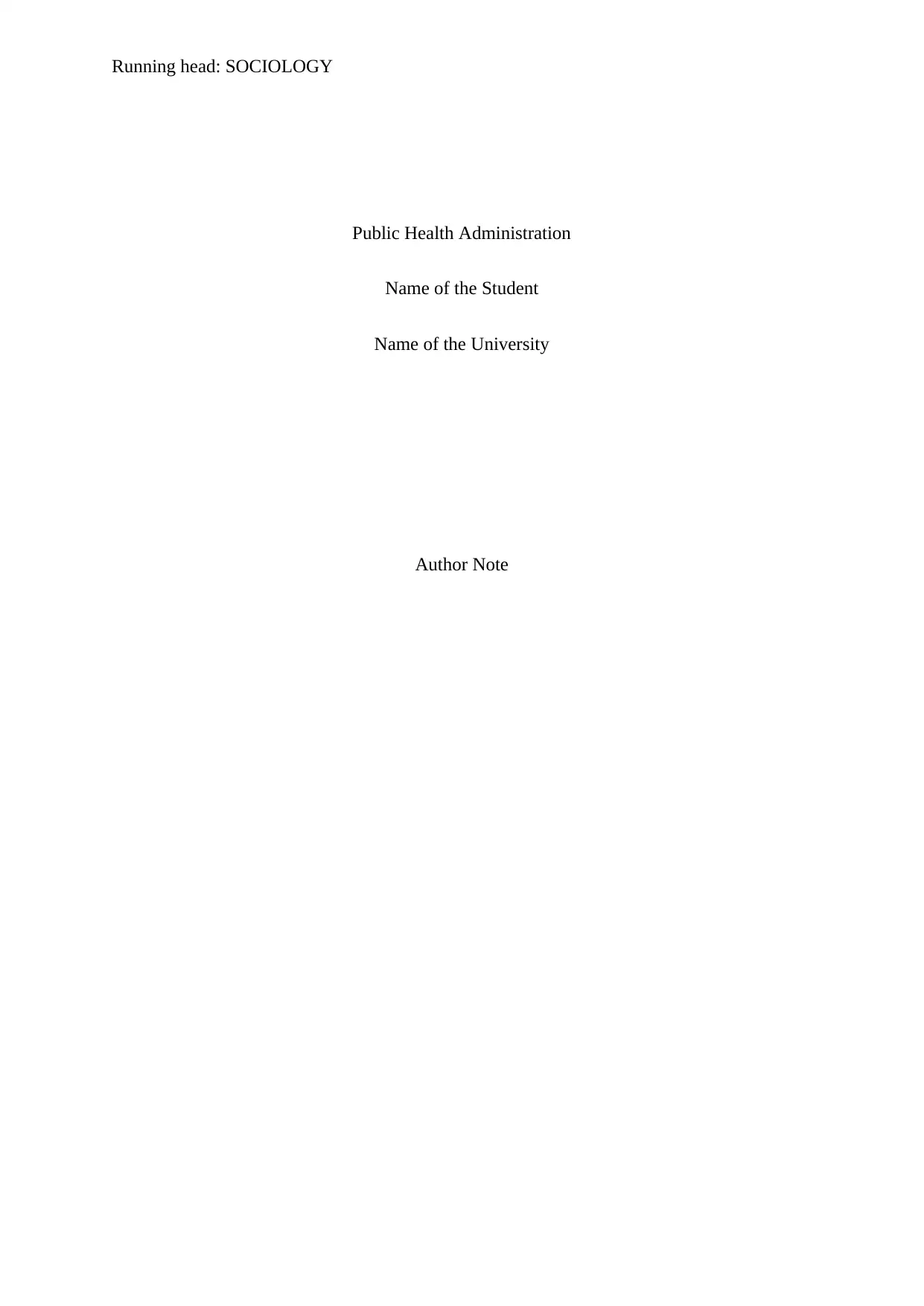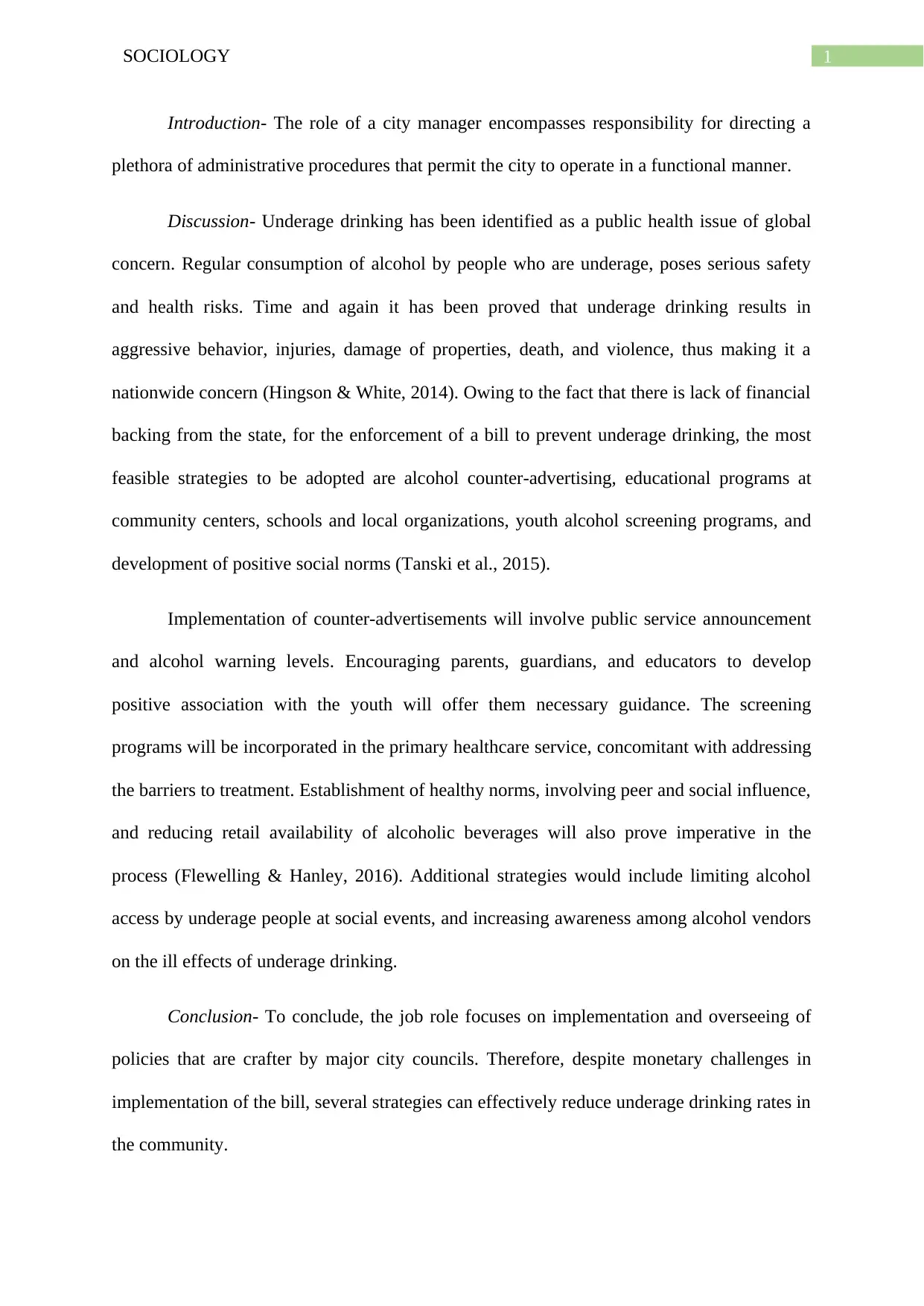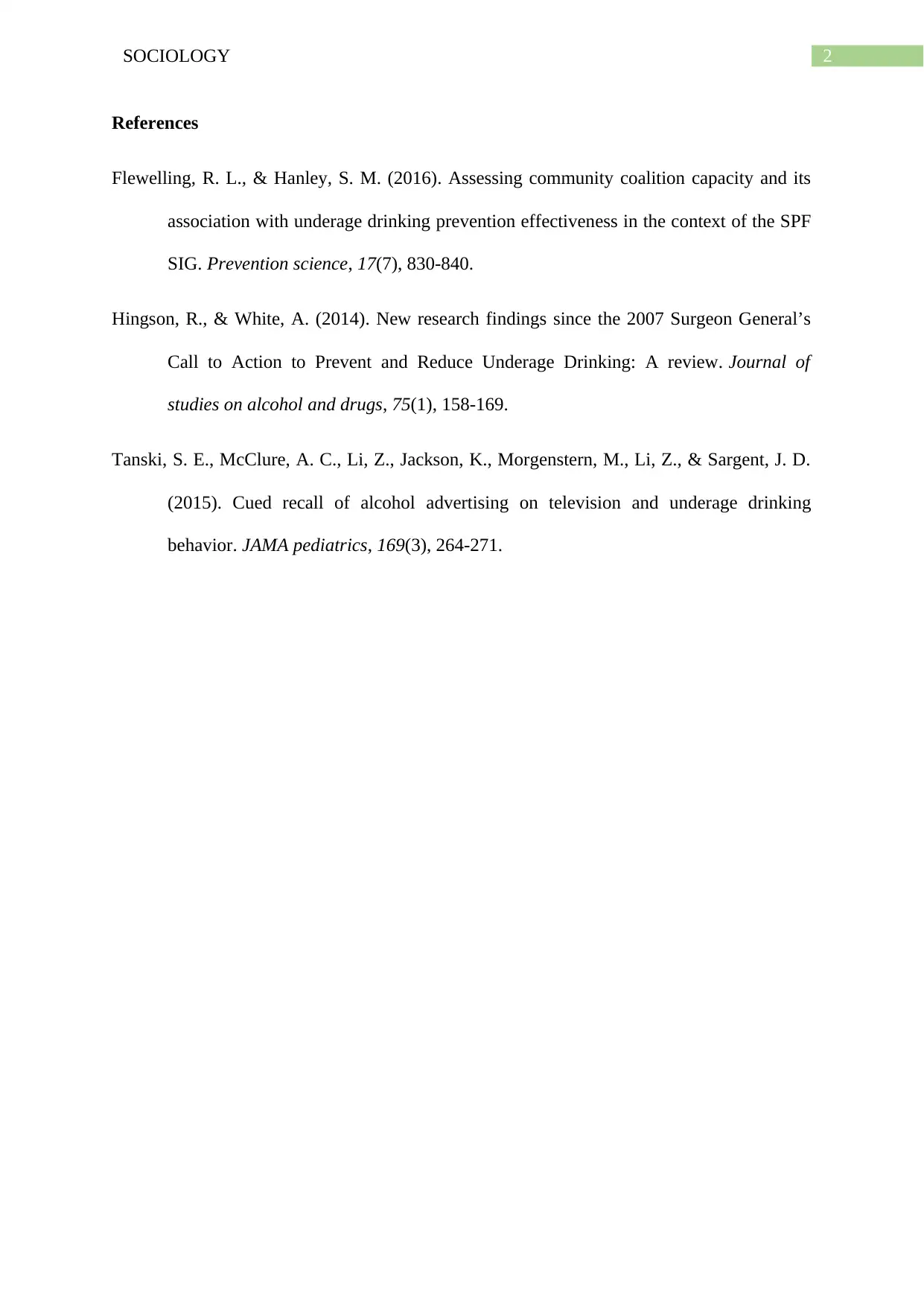Sociology: Public Health Strategies for Preventing Underage Drinking
VerifiedAdded on 2023/04/20
|3
|499
|211
Essay
AI Summary
This essay examines the role of public health administration in addressing underage drinking as a significant societal concern. It highlights the administrative responsibilities of a city manager and proposes feasible strategies to mitigate underage drinking in the absence of substantial state funding for enforcement. These strategies include alcohol counter-advertising, educational programs in community centers and schools, youth alcohol screening programs, and the development of positive social norms. The essay emphasizes the importance of engaging parents, educators, and peers in guiding youth, reducing alcohol availability, and raising awareness among vendors. It concludes that despite financial constraints, a combination of these strategies can effectively reduce underage drinking rates within the community by implementing and overseeing policies.
1 out of 3




![[object Object]](/_next/static/media/star-bottom.7253800d.svg)